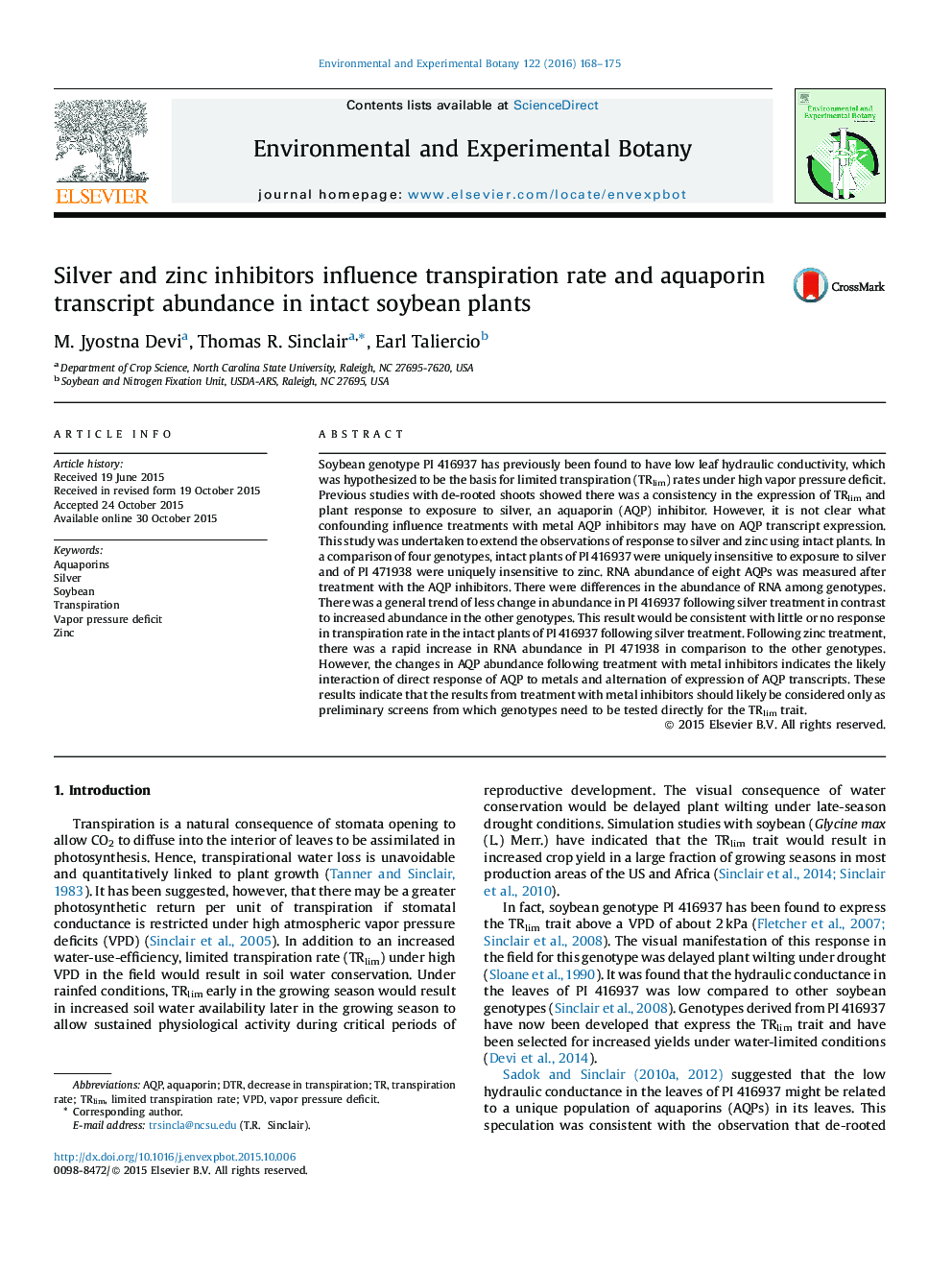| Article ID | Journal | Published Year | Pages | File Type |
|---|---|---|---|---|
| 4554175 | Environmental and Experimental Botany | 2016 | 8 Pages |
•Limited transpiration under high vapor pressure deficit allows crop yield increase.•Preliminary screen for trait explored based on tests using silver and zinc ions.•Results obtained on aquaporin RNA expression when plants fed metallic ions.•Generally transcripts were up-regulated with metallic ion treatment.•Use of metal ions for screening should be considered as preliminary screens.
Soybean genotype PI 416937 has previously been found to have low leaf hydraulic conductivity, which was hypothesized to be the basis for limited transpiration (TRlim) rates under high vapor pressure deficit. Previous studies with de-rooted shoots showed there was a consistency in the expression of TRlim and plant response to exposure to silver, an aquaporin (AQP) inhibitor. However, it is not clear what confounding influence treatments with metal AQP inhibitors may have on AQP transcript expression. This study was undertaken to extend the observations of response to silver and zinc using intact plants. In a comparison of four genotypes, intact plants of PI 416937 were uniquely insensitive to exposure to silver and of PI 471938 were uniquely insensitive to zinc. RNA abundance of eight AQPs was measured after treatment with the AQP inhibitors. There were differences in the abundance of RNA among genotypes. There was a general trend of less change in abundance in PI 416937 following silver treatment in contrast to increased abundance in the other genotypes. This result would be consistent with little or no response in transpiration rate in the intact plants of PI 416937 following silver treatment. Following zinc treatment, there was a rapid increase in RNA abundance in PI 471938 in comparison to the other genotypes. However, the changes in AQP abundance following treatment with metal inhibitors indicates the likely interaction of direct response of AQP to metals and alternation of expression of AQP transcripts. These results indicate that the results from treatment with metal inhibitors should likely be considered only as preliminary screens from which genotypes need to be tested directly for the TRlim trait.
